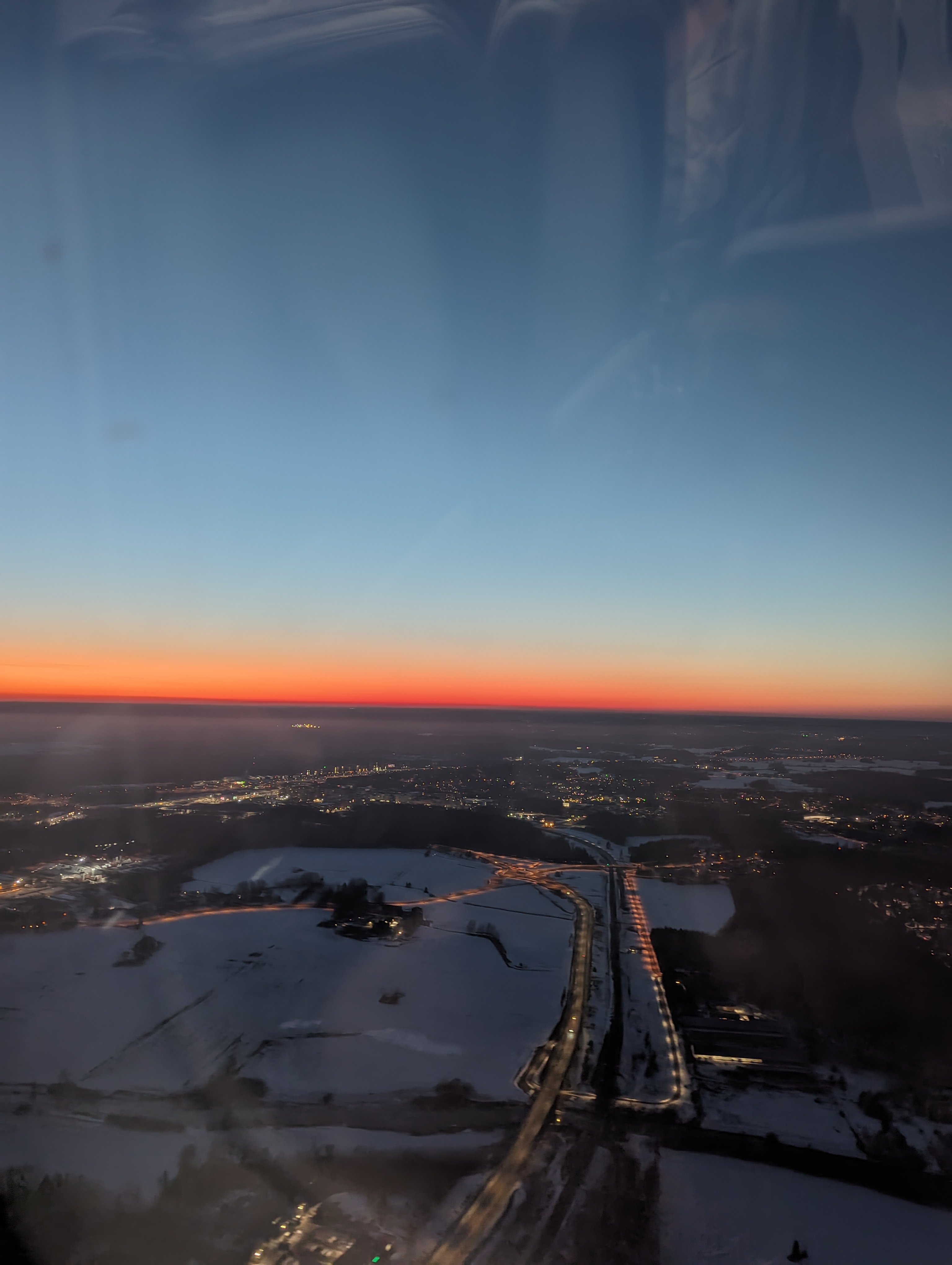ScanAgile 2024
I have wanted to go to the ScanAgile conference in Helsinki, Finland for years. Since I can not do it on my own and have not been successful in getting my employers to fund my travel and accommodation, I have to resort to being accepted as a speaker. Since ScanAgile is one of the (few) agile conferences that supports and funds travel and accommodation for speakers, I have been pitching ideas for talks for a couple of years. And in December 2023 I finally received the happy reply “Your talk has been accepted.”
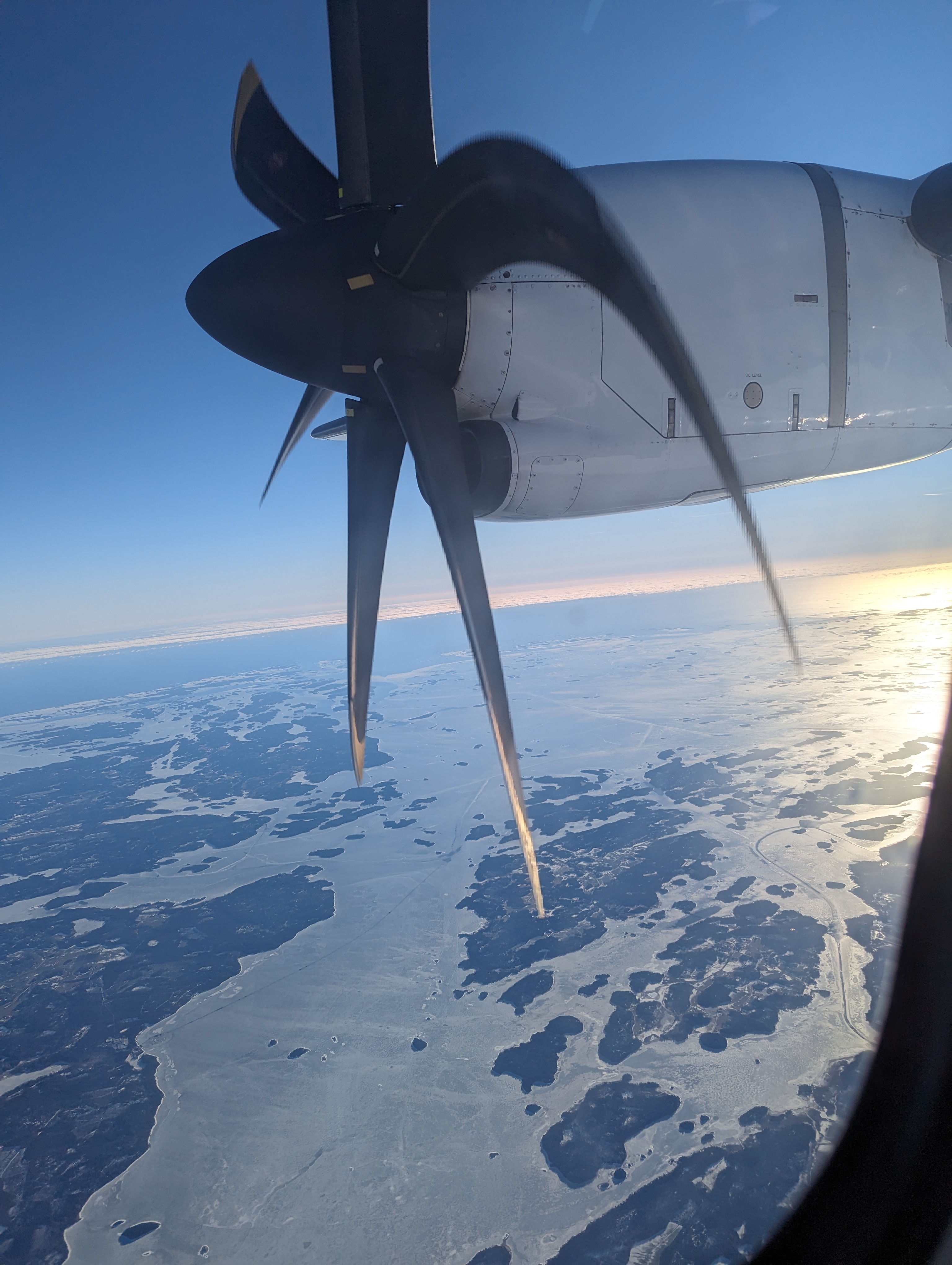
I had already done a lightning talk about the CI ODF we did in Red Hat in 2022-2023 and pitched “Co-creating a vision in the open with 5000+ people”. This would be a longer version on the same topic but with the opportunity to extend it from 10 minutes to 45 minutes including questions.
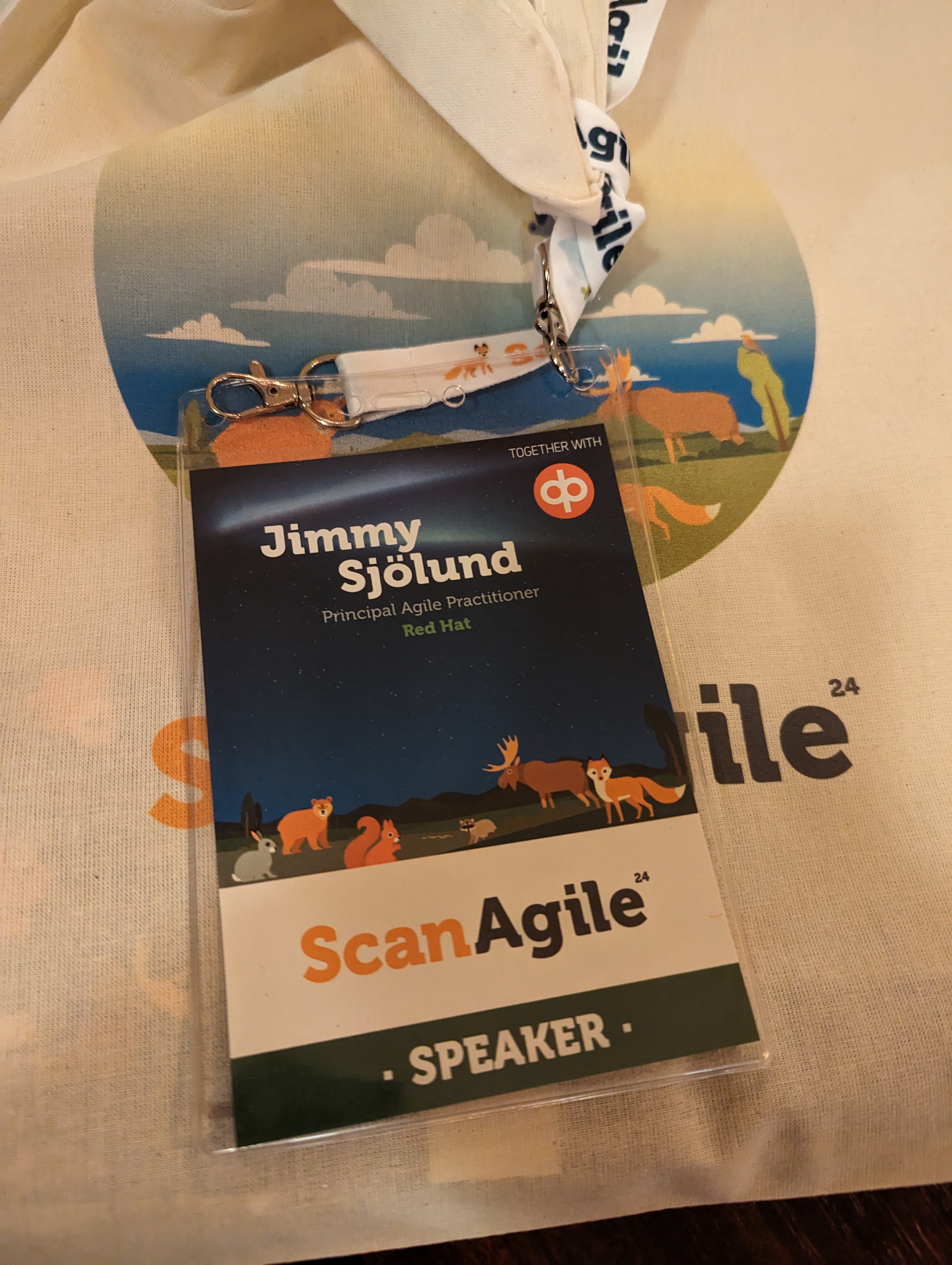
ScanAgile is one of the larger and most popular agile conferences in the Nordics.
ScanAgile24, the largest Agile event in the Nordics since 2008, takes place on March 6 and 7, 2024, at Paasitorni in Helsinki, Finland. People interested in Agile are invited to ScanAgile24 and to join the Agile community!
However, attendees and speakers come from all over the world, and I met people travelling to Helsinki from all over Europe, the US and Australia. Some were more surprised by Finland than others, like the Australian guy who only packed cargo shorts…
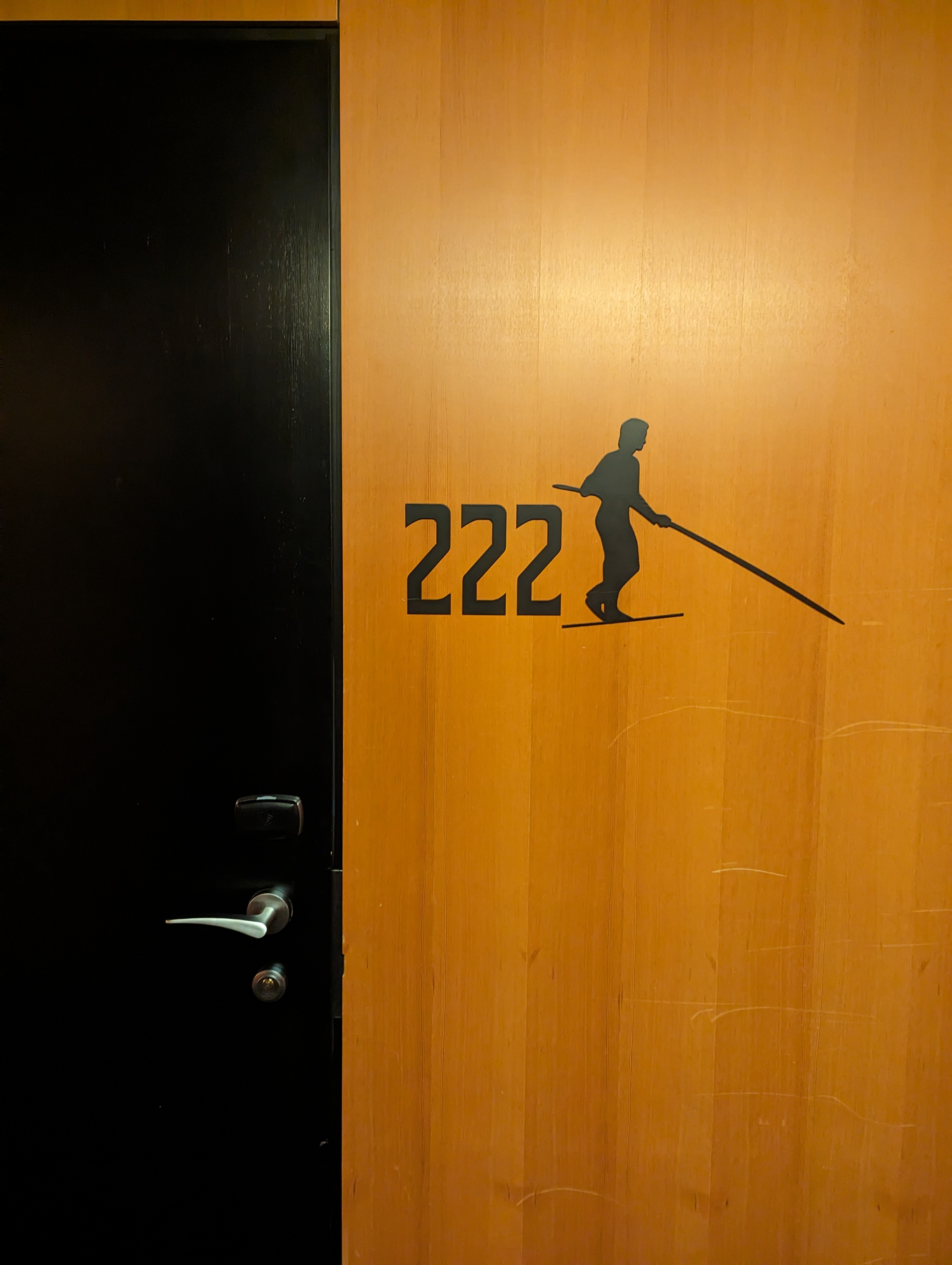
I was looking forward to meeting people I have talked to or followed online, but not yet met in real life. Like the amazing Esther Derby, famous for many things, but perhaps most of all for her iconic book Agile Retrospectives (just released in a second edition). But also the very energetic and productive Chris Stone and Cliff Hazell, of Spotify fame, now working with Klaus Leopold on Flight Levels Academy.
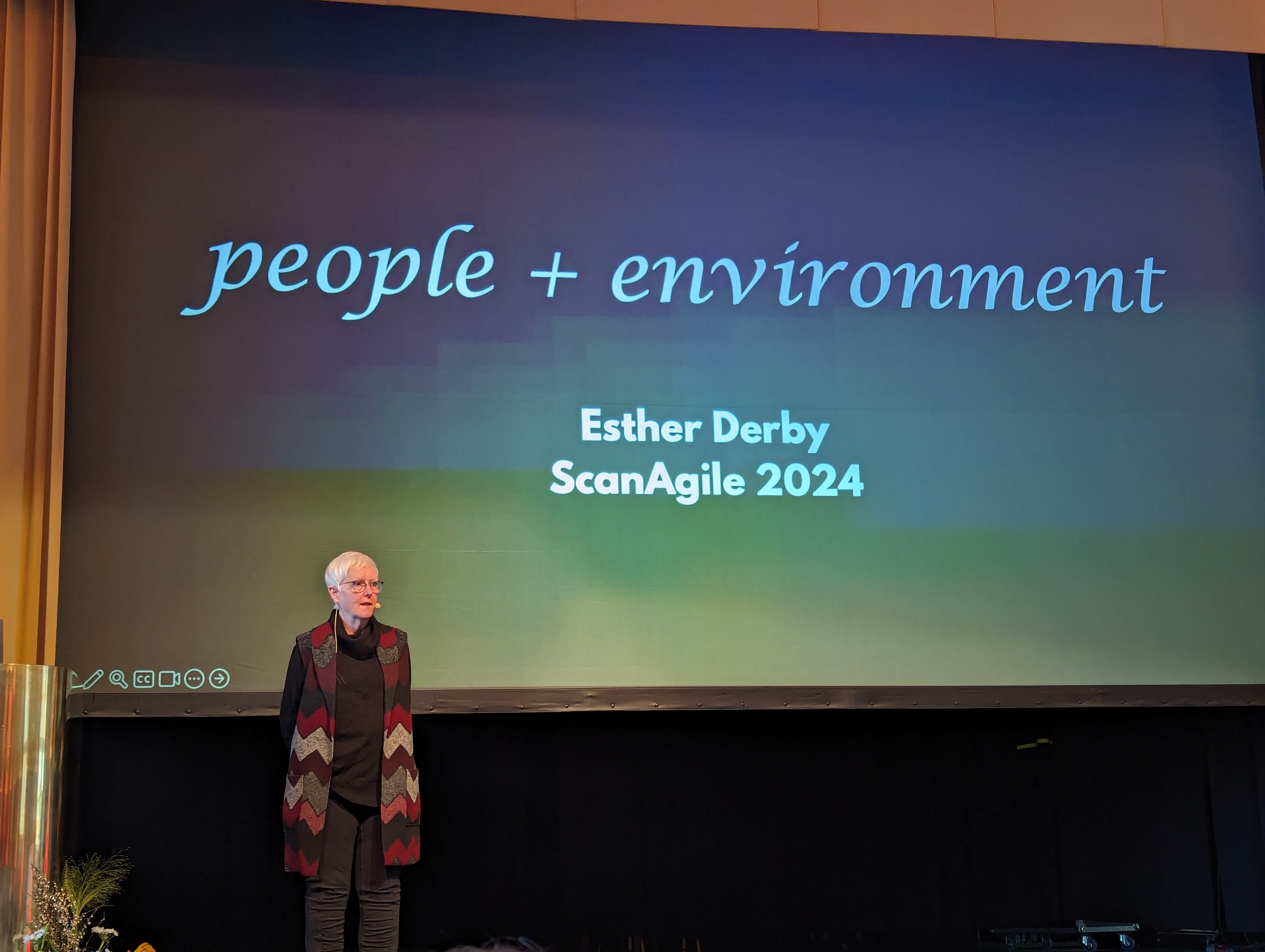
The trends I’ve picked up that seem to be ongoing in the agile world is a pivot to continuous improvement and people. Esther Derby’s opening keynote was about people and the environment, how we can change a small thing around us to have a significant impact on how we work, how a team works or even how an organization works. Diversity and psychological safety were also recurring themes in many of the presentations.
Chris Stone’s talk “Scale Agile? No. Let’s Scale Improvement” covered many ideas and methods on how to do continuous improvement at scale as well as in smaller formats.
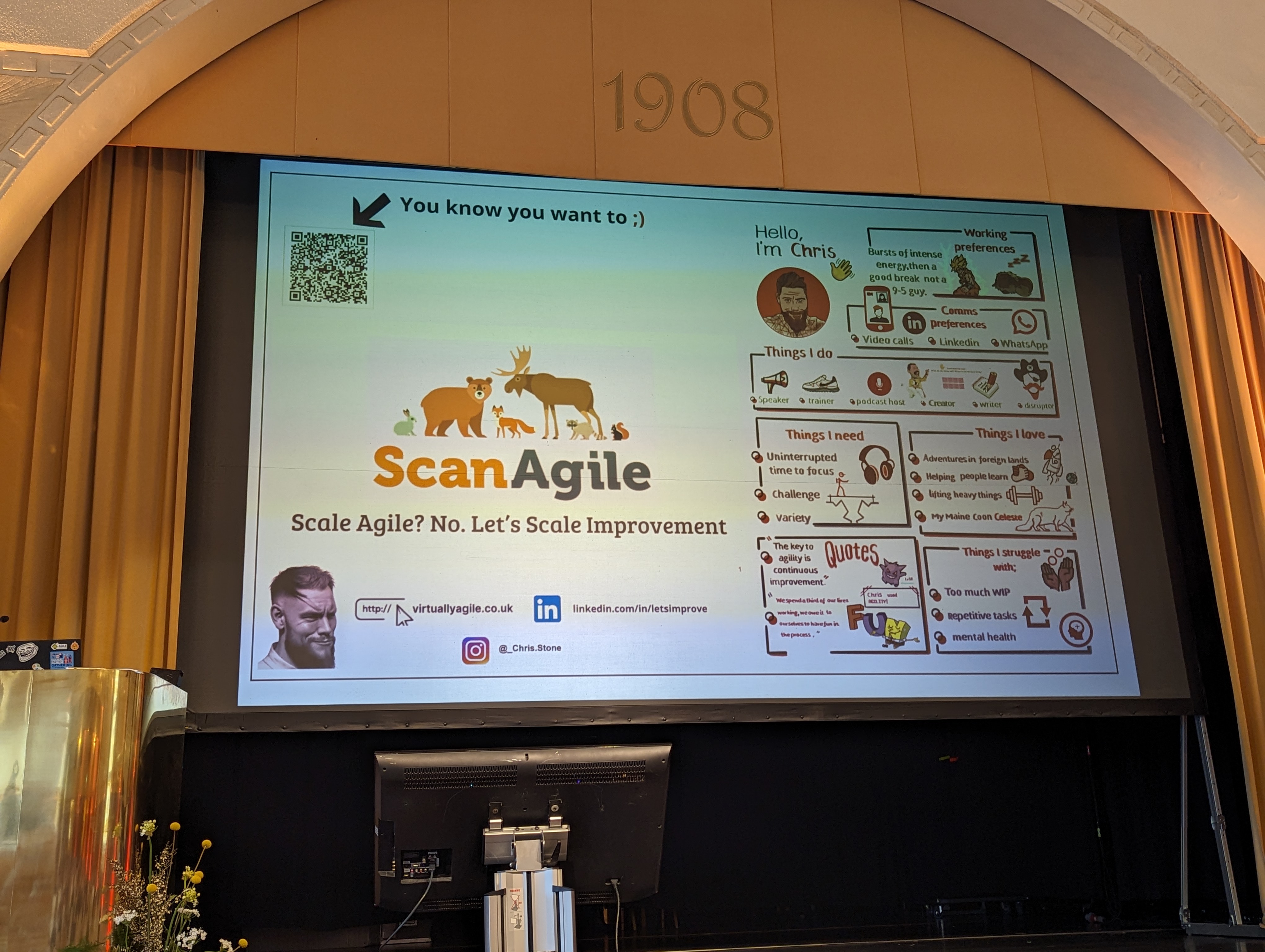
Cliff Hazell’s Flight Levels was discussed in at least two talks I attended and is a way of working in a larger organization with many teams and dependencies. It seems to claim to be less complicated than SAFe or LeSS. To me it seems to be another, but yet similar, way of looking at the same issues and levels and not much different or less complicated than, say, SAFe. It got me curious to learn more though.
Organizations are still struggling to scale agile and perhaps, as many are suggesting, we are on the cusp of the “next” thing. No one is sure what the next thing is yet, but with continuous improvement now being heard more than agile, I sense something is happening. Not that continuous improvement is new!
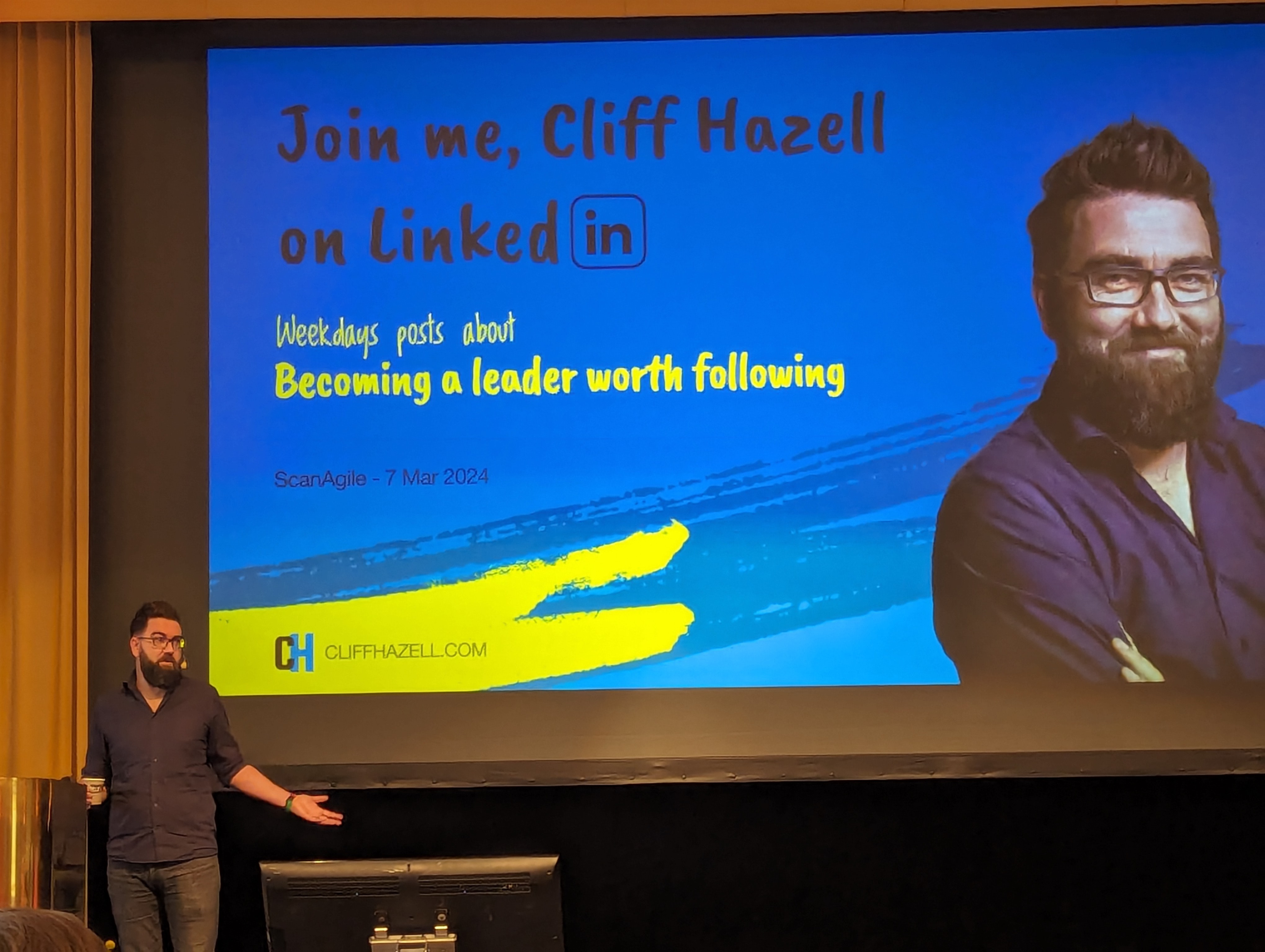
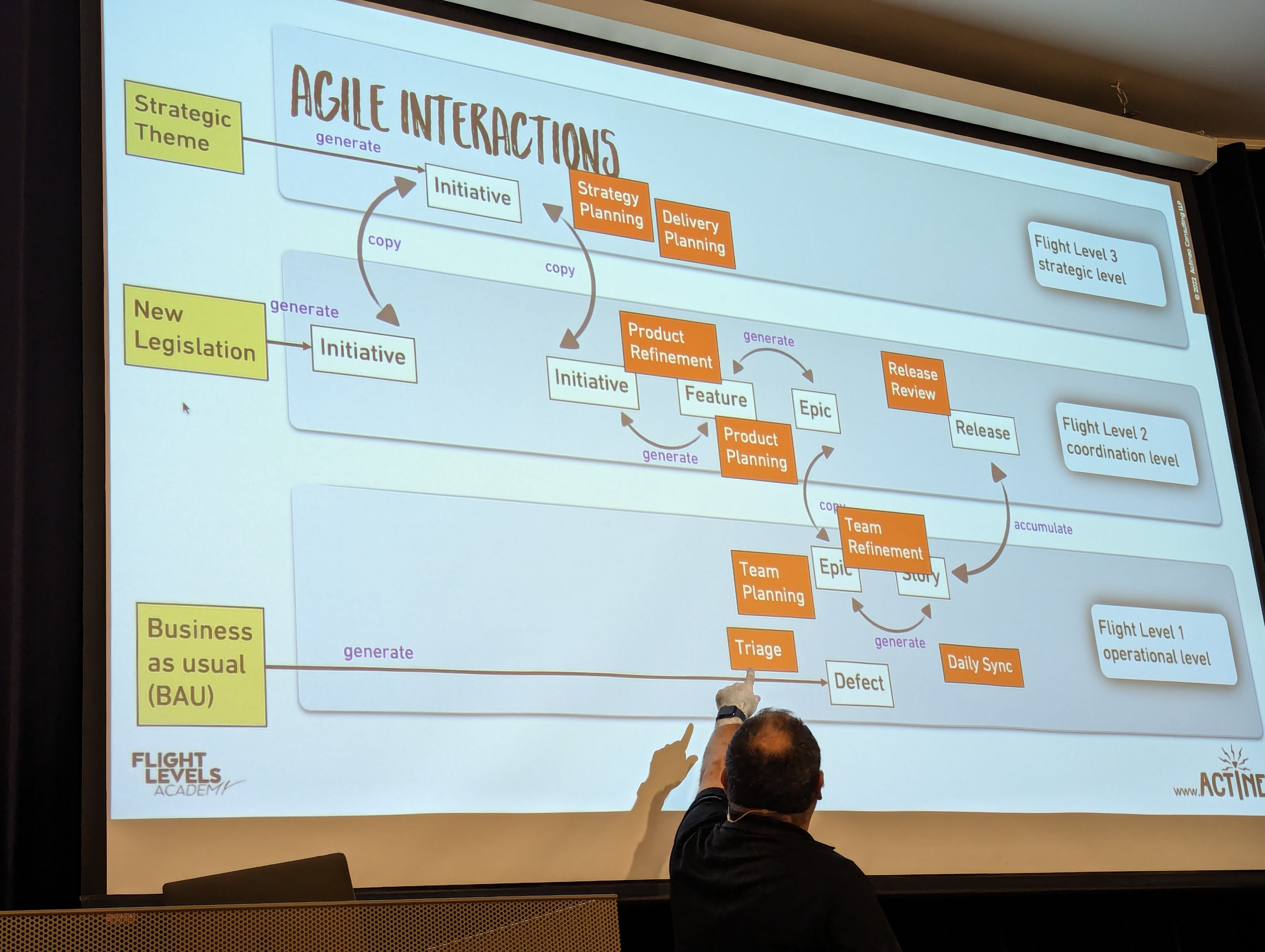
Team Topologies is still an active discussion, judging by the number of talks that included it, although there was at least one talk with “Beyond Team Topologies” in the title.
Another trend I noticed was the use of Miro for their presentations. There is also more functionality in Miro now to support interactive content in your presentation, such as allowing the audience to scan a QR code and write stickies that were automatically displayed on the slide. Fewer people were using Slido or Mentimeter, which were more common in the past.
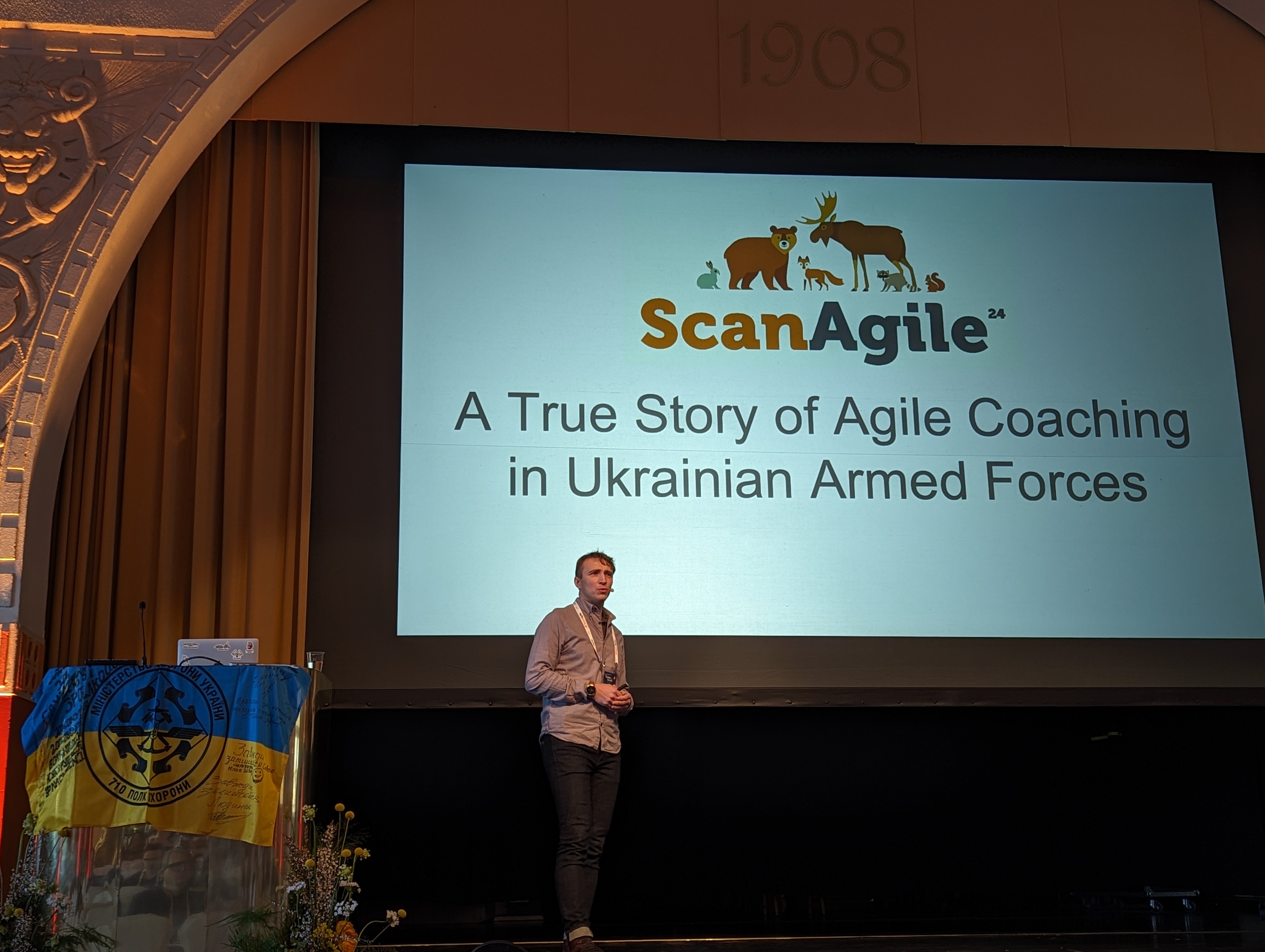
Perhaps the highlight of the conference was listening to Dmytro Yarmak tell his story of using his agile coaching skills in the Ukrainian Armed Forces during a time of war. It was emotional, but also funny and inspiring to see how his attitude as an agile coach actually changed the way parts of the army work today. And by the way, they used Trello. A little comment on security there: “Well, it’s wartime, everything changes so fast and we had bigger issues than assessing the potential security risks at the time. The main takeaway was how asking “why” a lot changed behaviour not only in his area, but spread upwards in command. I recommend watching his talk, which was previously recorded as a webinar.
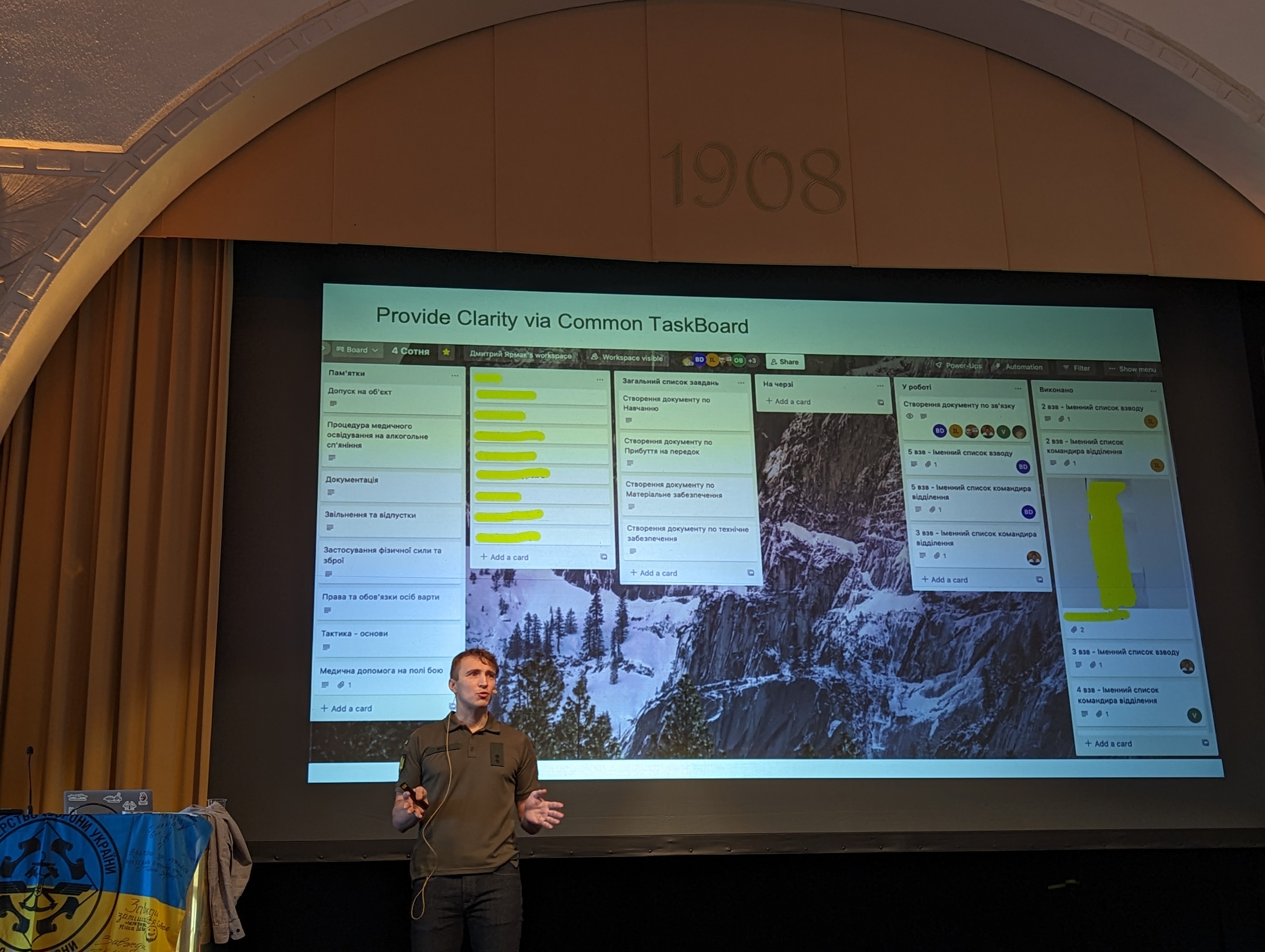
There were 3-4 tracks and 3 workshops running in parallel, so even if you went to something in all the time slots, you could only see about 25% of the conference. It was hard to choose which topics to attend. Unfortunately they no longer record the sessions. It was concluded that the cost of good quality in 3-4 rooms for two days was not worth the value received. Instead, they are focusing on other value-added parts, such as funding travel and accommodation for speakers, in order to have a better chance of attracting high quality speakers. For which I’m happy! I also saw some that brought their own photograper and/or video recorder.
Co-creating a vision in the open with 5000+ people #
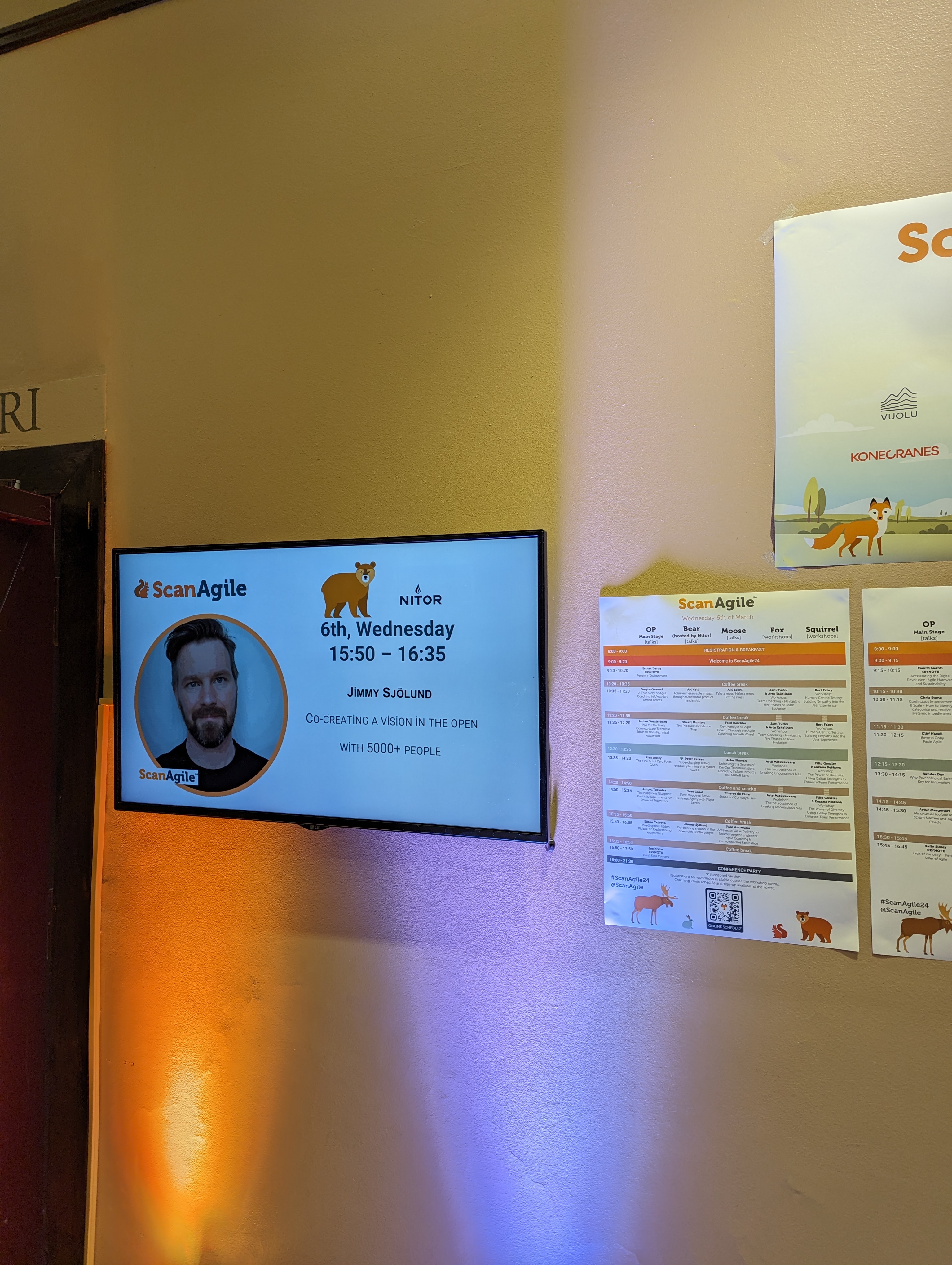
My own talk went well and seems to have sparked ideas and people looking at the Open Decision Framework. There were some really thoughtful questions at the end of my talk and I had several people continuing a conversation in the breaks between sessions.
Here’s a Miro board with my and most of the other presentations at ScanAgile24 (it does require to sign up to Miro though …)
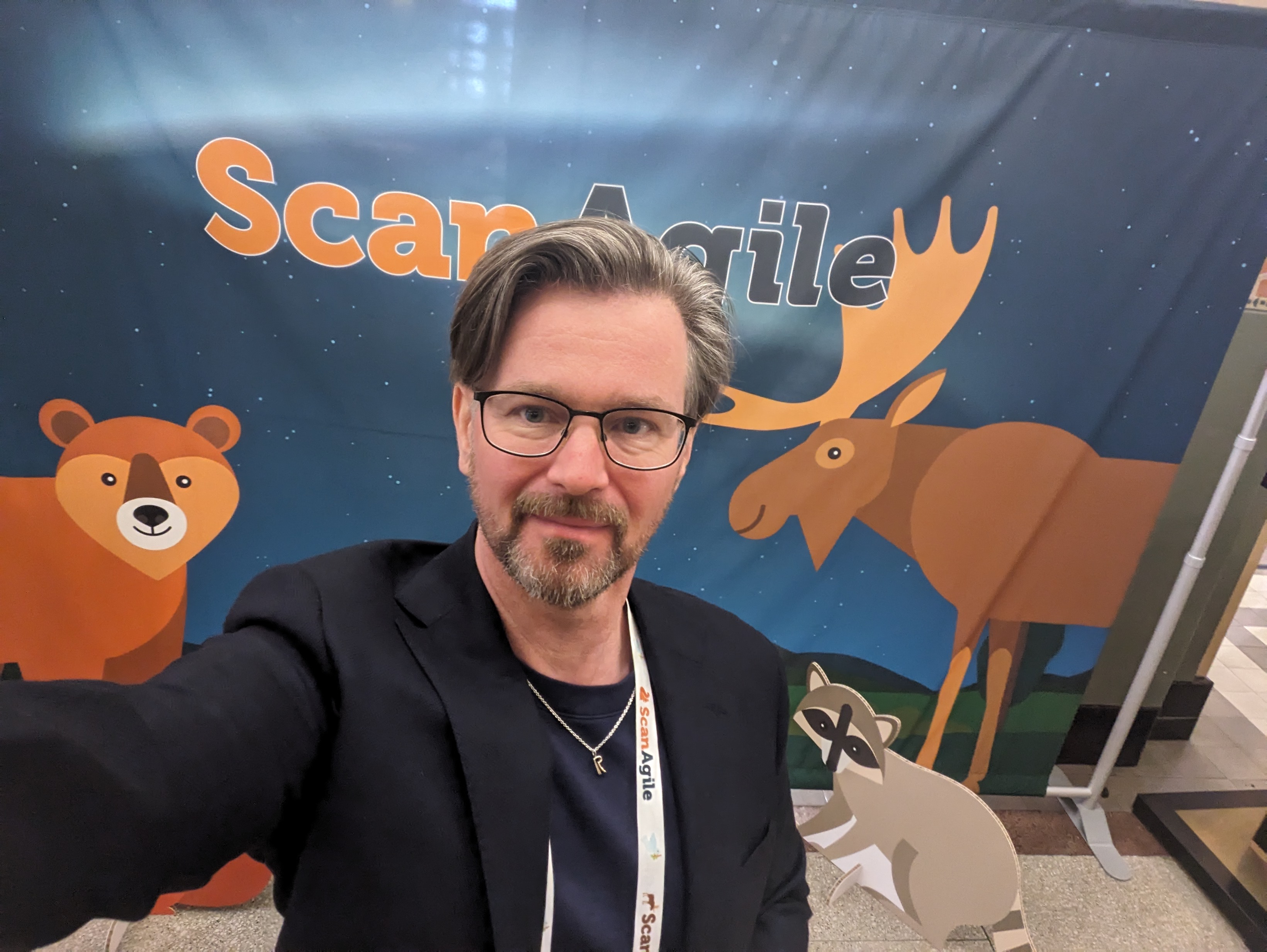
Eventually it was time to head back home …
